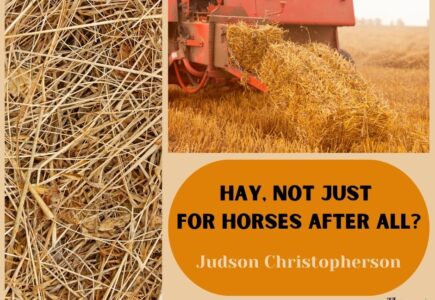Quintessential to a Saskatchewan summer road trip is the scenery: fields of soothing violet flax, bright yellow canola, and the greenery of cereal crops complement the natural beauty of our living skies. Scattered throughout the landscape, a passerby may see rows upon rows of light green cylinders or rectangles, or possibly even a field of what appears to be marshmallows. Regardless of the shape or form of bales, forage production (more commonly called haying) is a vital part of the cow-calf industry in Saskatchewan.
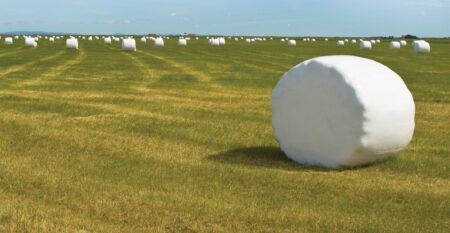
Forage production is extremely diverse, with numerous preservation methods used to turn standing fields of annual or perennial grasses and legumes into hay, silage, or greenfeed throughout June, July, and August. Forage production is a necessity of many livestock enterprises operating in the inhospitable climate of Saskatchewan. While year-round grazing is possible in warmer climates, large snowfall events and frigid temperatures mean cattle are often unable to subsist in a grazing environment throughout Saskatchewan winter months. Cattle producers rely on forages to provide up to 90% of bovine diets, making both summer grazing and winter feed valuable commodities on any ranch.
Haying
To sustain cattle throughout the harsh winter, ranchers spend large portions of their summers cutting, raking, baling, and transporting bales. This summarizes the process for ‘haying’, whereby producers cut perennial forage crops at the optimal balance between nutritive value and tonnage yield to maximize forage productivity. Additionally, the same ‘haying’ process can be applied to annual cereal crops such as oats, barley, or wheat to produce a product called greenfeed.
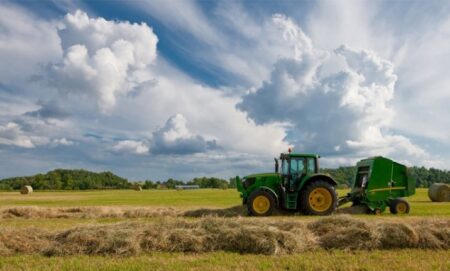
Once cut, forage crops are laid into swaths to dry for multiple days, though dry-down lengths vary by species and often increase with greater legume rates. To lessen dry-down time and hasten subsequent field passes, large rakes are used to combine multiple swathes and improve air flow through the crop. Once 15% moisture content has been reached, baling will commence, often creating six foot tall by five feet wide, 1200–1600-pound round bales.
Determining when forages are ready for baling is often an unscientific process. Producers often pick up a substantial handful of forage and twist if vigorously; if the forage easily breaks in three twists, it is most likely ready to bale. Subsequently, balers may be equipped with onboard moisture testers that provide real time updates directly, with handheld devices providing in-bale moisture tests as well. Alternatives to the round bale less common in a cow-calf setting are small and large square bales, which are disadvantaged by their smaller size and the need for indoor storage.
Silage
Silage has a much higher moisture content than hay regardless of production process. Large silage choppers can be used to convert swathed cereal crops, perennial forage crops, or corn into fine particles that are returned to the storage site for compaction and sealing for oxygen removal. The removal of oxygen combined with high moisture and starch content facilitates the fermentation of the forage to an ‘ensiled’ state. This production method improves feed values substantially relative to dried feeds, by limiting losses in nutritive value.
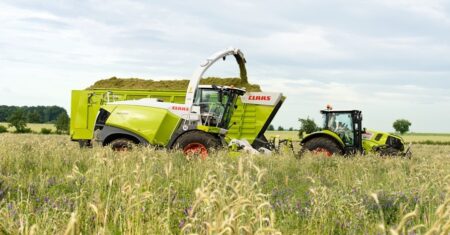
Similarly, specialized balers can be used to bale silage crops, chopping and compacting the material into bales. In some instances, specialized wrappers are used to encase the bales in a white plastic film directly in the field, facilitating the ensiling process and creating the aforementioned field of ‘marshmallows’. In other cases, bales are hastily hauled to a long-term storage spot where tubeline wrappers are utilized to wrap the bales in film. Regardless of the method, silage production generates feed of the highest quality; however, it can be the costliest and most labour demanding process to produce fodder.
Alternative Methods
Alongside hay and silage, a multitude of alternative methods have gained popularity on the prairies in recent years. First, swath grazing involves swathing a forage crop and simply leaving it in the field until it is required for feed. The risk of nutritive and physical loss to weather and wind in this method is higher, however, swathes can repel water and sustain high winds in many instances. To ensure cattle utilize the feed efficiently, portable fencing is used to restrict access to the field. Secondly, bale grazing follows similar principles by swathing and baling the forages and leaving them in the field without any twine or wrapping. Cattle receive restricted access to the bales to ensure efficient feed use and limit selective grazing. Lastly, year-round grazing with supplemental nutrition does occur in some areas.
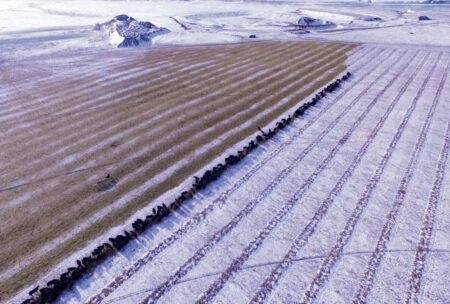
Each alternative method is less costly and labour intensive than silage or hay. These methods often involve leaving the forage for consumption in the same field it was grown, making them appealing to extensive, labour intensive, and low-margin cow-calf operations.
Concluding Remarks
The multitude of methods used to provide adequate nutrition to beef cattle throughout the production cycle characterize the diversity of the industry. Most producers use multiple methods to achieve different end goals. For example, alternative methods are often used to feed groups of cows in the late fall when temperatures are less hostile. While silage is used to add weight to feeder calves throughout the winter months on operations that want to value add through vertical integration. Regardless of how it is done, forage production represents a large and important part of agriculture in Saskatchewan.

